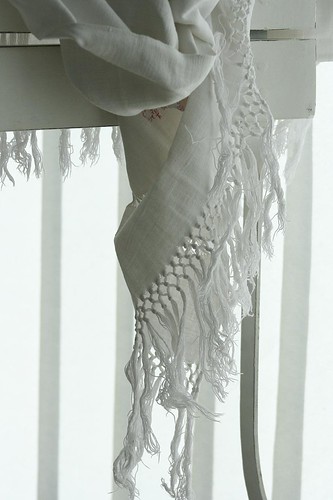To prepare means “to prepare the table for a meeting “and making it in the best way is a sign of respect towards our hosts. Or for an informal lunch or a supper for work, a table prepared with simplicity, taken care of the details and a touch of class, it will make you understand who’s seating with you, how much importance is given to this encounter. Here some suggestions.
The tablecloth is the Queen of the table; it can be linen, cotton, with designs or in united ink: the most important thing is that it is adapted for the type of reception, more or less elegant and that the agreements with the plates, but above all, it has to be to be perfectly ironed.
The alternatives for the tablecloth can be the American type of tablecloth, perfect for the meeting between friends and family lunches, or the runner (the “tête à tête” for the French people).
The plates, put down on underplates or put directly on the tablecloth, have to be placed in equal distance one with another; if they are decorated with designs, frieze, decorations, these have to be turned towards the edge of the table, so that the person seated can see them in their correct position. When the service is carried out by one or more waiters, a single plate is laid on the table (when there is also soup served with lunch, the deep plates or cups for the ‘consommé’ are also put on the table) and the waiters supply or change plates for the other courses. When instead there is no service, the table can be prepared with three plates, the appetizer, first and second; the others can be taken by hand, presented on a small table or an undercarriage; obviously the number of necessary plates varies according to the courses of the menu.
Also the number of cutlery varies according to the menu; their position is however fixed: on the left of the plate the forks, in this order: normal and those for fish; on the right the knives, normal and for fish, with the blade turned towards the plate, and the spoon for soup; the little spoons for dessert are offered horizontally in front of the plate, the fork with the handle face towards left and the spoon towards right; between those two can also be inserted a knife for fruit in the same sense of a teaspoon.
An alternative can be: carrying them according to the moment, supported by the saucer for fruit or dessert.
The glasses are slightly put to right of the plate in front of the knife; there must be at least two, one for water (the largest one) and, to its right, one for wine (the smellest one); if more wine is served, the number of the glasses increases, but they are always placed to the right of that one for water (in that case, for water you can also use a glass without stand, that varies from the others). For valuable wines the glasses must be absolutely without colour: the ink of the wine, its tonalities, its glares and its "body" must be transparent without uncertainties. The best form is the one of tulip, with the goblet, wide enough to the centre, so that the contact air-wine from which exhales the scent (bouquet) is found concentrated in the part with slightly more grip of the top.
The wine is served in its bottle, except that one aged, which will have to endure an oxygenation procedure (settling) and needs to be served in a carafe (decanter). It possible, before the dessert, remove all the glasses (only the ones for water) and add the one for the dessert.
The napkin is put down on the plate or side by the cutlery, if it has not found place on top of the underplate. Or it is placed on the left of the cutlery; some people put it on the right, others on the left; for less important lunches they can also be folded and threaded in a glass.
The bread is put on the table in appropriate baskets; sometimes, even if in Italy it is not very frequent, little plates are being used for the bread, put on the left of the plate in front of the forks.
On the table you cannot forget salt and pepper; for informal lunches a single salt shaker and a single pepper mill is enough, while for important occasions a small salt shaker and a peppermill is placed next to every plate or between two plates.
Other objects like the cheese bowl, the sauce boat, is put on the table only if they are necessary. On the contrary, ash tray and toothpicks are announced publicly.
The water, if mineral, is left in its original bottle, if it is tapped it has to be served in a carafe.
The centrepiece has to be simple and less cumbersome, and if with flowers, little perfumed. It is better low in order not to disturb the view of whom is in front. According to the occasions and the season, the flowers can be replaced by candles, also buoys, fresh fruit or vegetables.
Don’t ever commit the error to favour the lead table above the meal! This would mean frivolousness and excessive protagonism towards the head of the household.
Drown free to:
"Il grande libro del Galateo" editrice Orsa Maggiore – "Il Galateo a tavola" di Luciano Baracchini - "Il Galateo" di Brunella Gasperini.






